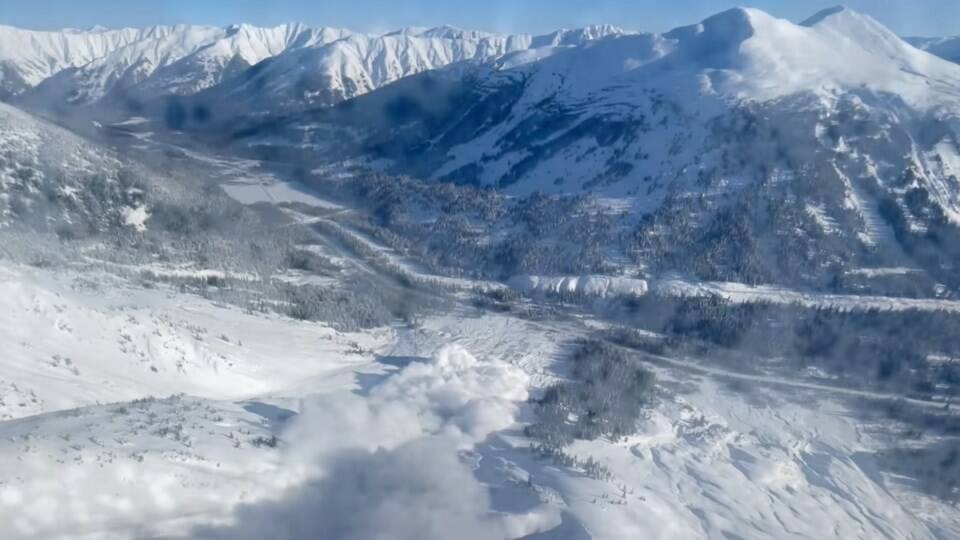Re: Closing B.C.’s backcountry not ‘feasible’ despite death toll hitting 12
Dear Editor,
Avalanche tragedies leave emotional and mental scars on SAR volunteers, and are a stark reminder to take a proactive approach to backcountry safety.
As an even more treacherous spring avalanche season approaches, I encourage people to consider the real risks before entering the backcountry.
Avalanche Canada claims it has no authority to close the backcountry. I have asked the B.C. Government for information on which department has jurisdiction over closing backcountry areas when avalanche risks are high.
There are about forty heli ski operators in B.C. which generate thousands of jobs and billions in revenue, which for the majority justifies leaving avalanche areas open. It is a commonly used argument that more people drown in the summer months from not wearing life jackets than die in avalanches.
How is losing a dozen people so far, smashed to pieces and crushed by tons of snow, acceptable?
Public service announcements in the winter could help keep people in bounds during high avalanche conditions.
Ticketing could be implemented for those using closed backcountry areas and/or without proper gear. Transport Canada could levy fines for helicopters landing in high avalanche risk areas full of paying tourists.
Having nothing in place to reduce the harm being done now results in:
- The hurting of revenues of tour companies, communities and the province as a whole.
- Jeopardisation of the safety of all involved.
- A significant cost to the province when there are fatalities.
Here are five approaches that, if combined, would prevent more avalanche deaths and injuries:
1. Education and awareness
Private companies give Avalanche 1 and 2 classes – take them. Avalanche Canada has an informative website – check it before heading out. PSAs would help keep people within bounds when necessary. Consider resorts who do avalanche control and close high risk areas. Otherwise, surely it’s equivalent to boating without your PFD?
2. Proper equipment: Carry beacons, probes, and shovels
Companion rescue saved lives during the recent Pemberton avalanches.
3. Risk assessment: Use ATES and understand snowpack stability.
Don’t go out when the terrain is unstable.
4. Professional Guide
As we’ve seen this may not make a difference if the risk is extreme. Don’t travel close together. One person travels across a slope one at a time before the next one to minimize risk. It is time-consuming, but safer.
5. Regulation: Make avalanche safety training mandatory for the backcountry
Check that safety equipment is carried, limit access to high-risk areas, and issue safety permits for helicopter, cat, skidoo, and other tour operators if they don’t already. Enforceforcement at boundaries and departure points.
Value the lives of recreationalists, professional guides, and Search and Rescue volunteers who attend to avalanche callouts at their own peril versus thrill-seeking, revenue and jobs when avalanche conditions are likely.
The attitude that we lose relatively few people to avalanches needs to change. Watch out for each other.
Cathalynn Labonte-Smith,
North Vancouver
Editor’s note: North Van MLA Bowinn Ma, the Minister of Emergency Management and Climate Readiness, provided the following response to Labonte-Smith’s inquiries:
“My heart goes out to the loved ones of the individuals who lost their lives in this year’s avalanches. My thanks to the first responders and all those involved in responding to these tragic events.
Avalanche Canada continues to monitor the avalanche risk and conditions in BC, and advise that snowpack conditions are dangerous and highly unpredictable. Anyone thinking of heading into the backcountry should check avalanche.ca or the Avalanche Canada mobile app and seriously assess the conditions and terrain, and potentially consider delaying their trip until conditions are safer. Those who do head out need to stay away from steep slopes and terrain where an avalanche could have life-threatening consequences and pack the essential gear, such as a transceiver, a shovel and a probe.
The province, Avalanche Canada, the Association of Canadian Mountain Guides, and Search and Rescue groups, as well as other agencies such as AdventureSmart, Destination BC and Canada West Ski Areas Association, will continue to focus on informing the public about risks and necessary precautions.
The Province demonstrated its commitment to supporting Avalanche Canada through a $10-million grant in 2021 in order for the organization to continue and expand its important work monitoring avalanche risk and providing important public safety information so British Columbians can make informed decisions. Since 2021, Avalanche Canada has expanded its forecasting to provide regular forecasts on Vancouver Island and in Northwest BC, launched a new mobile app including hourly weather data from over 80 remote weather stations, and issued a record-setting number of forecasts in 2022, among other advancements.”
What are your thoughts? Send us a letter via email by clicking here or post a comment below.



